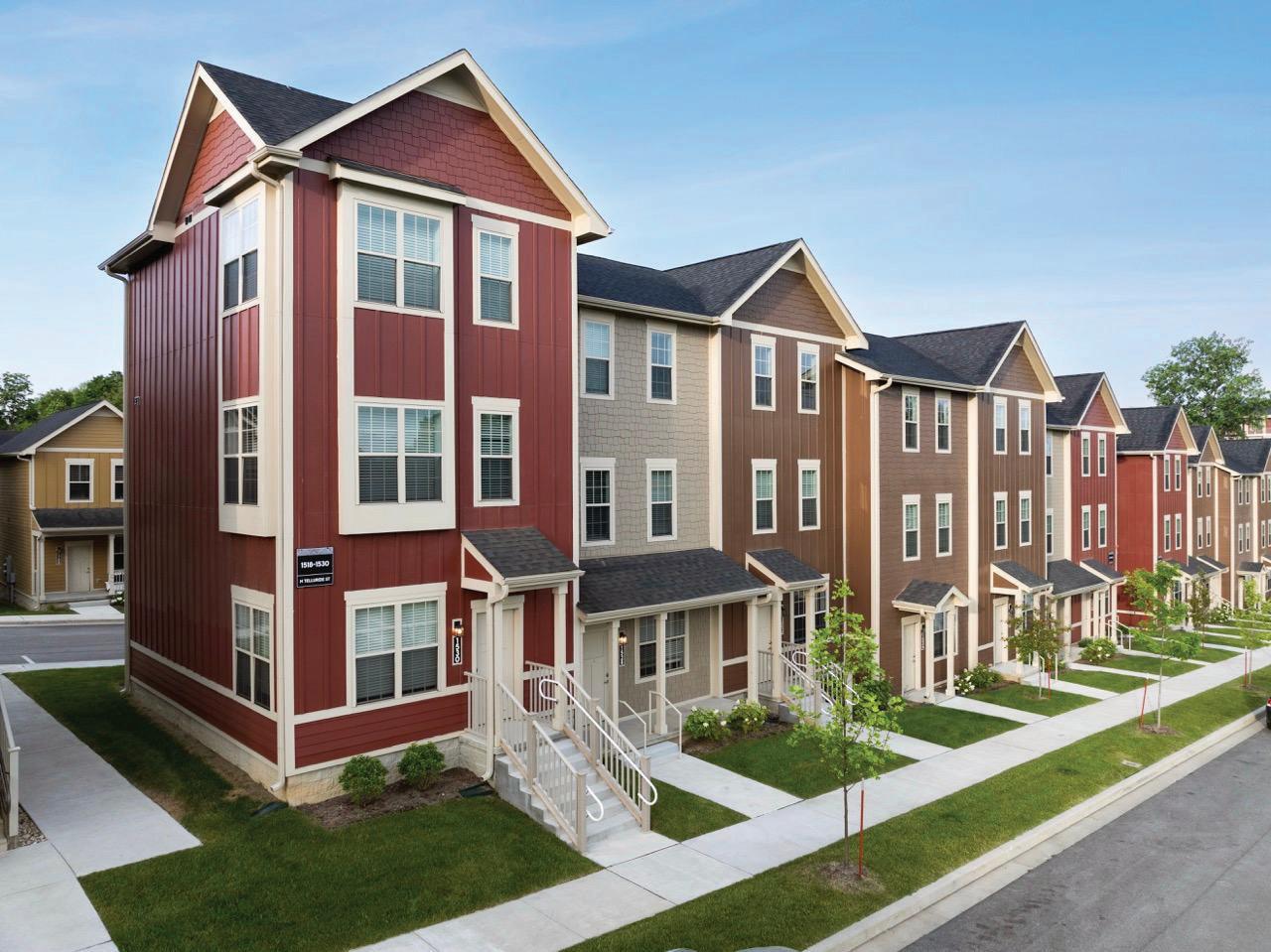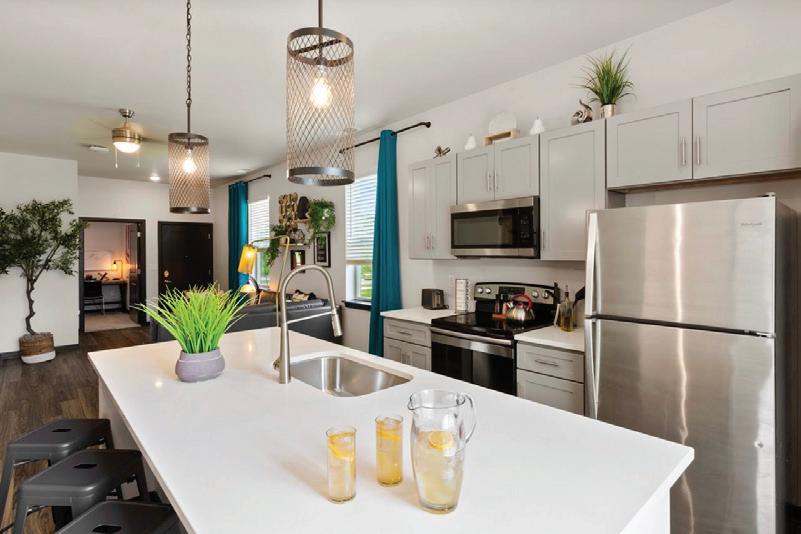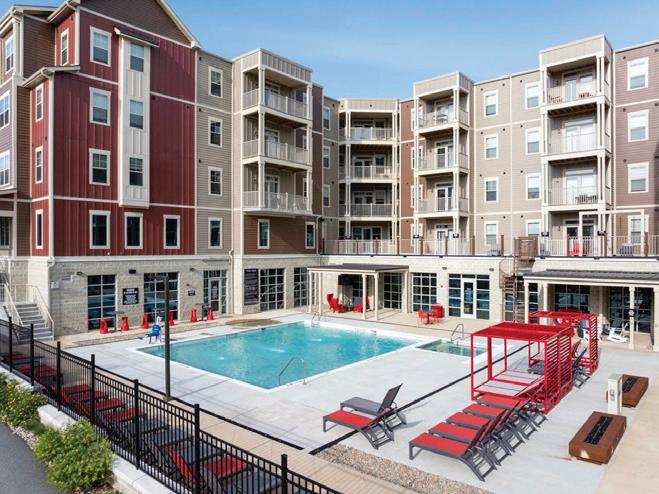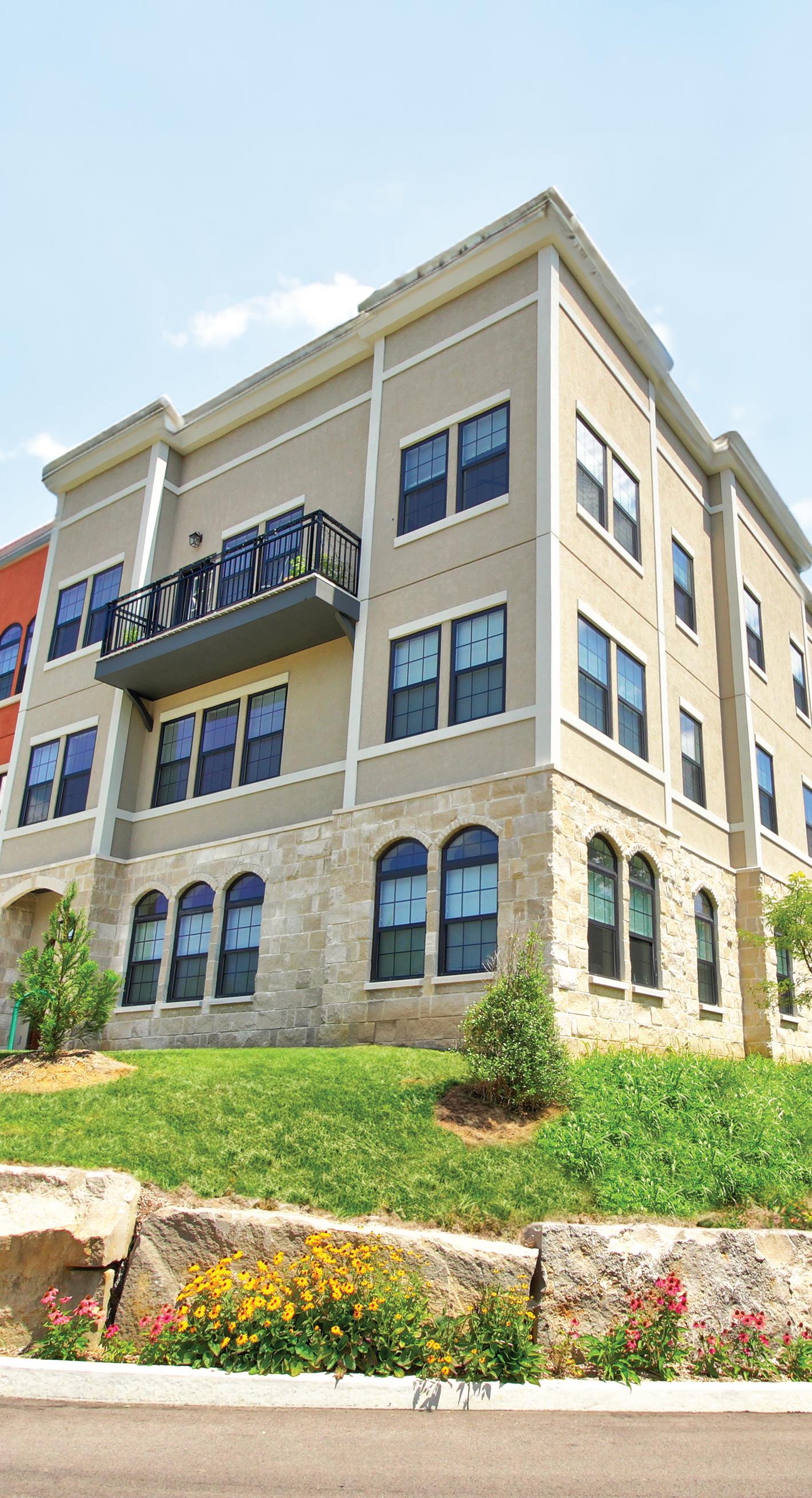

SPRING/SUMMER 2025




SPRING/SUMMER 2025

AN INDIANA DAILY STUDENT












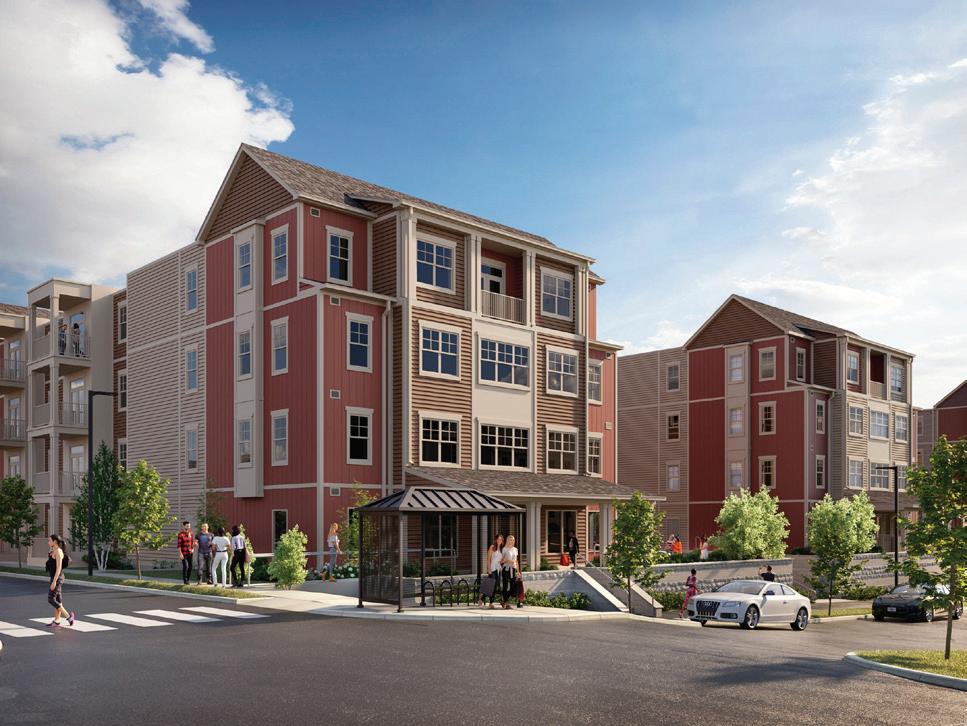
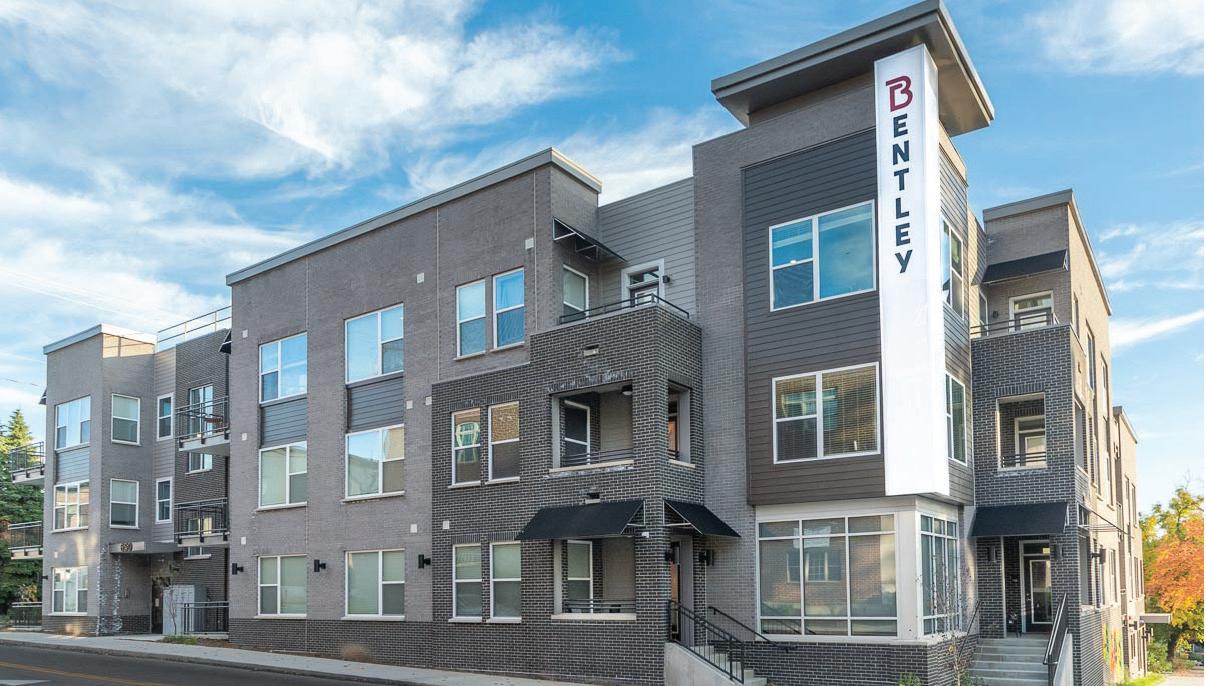

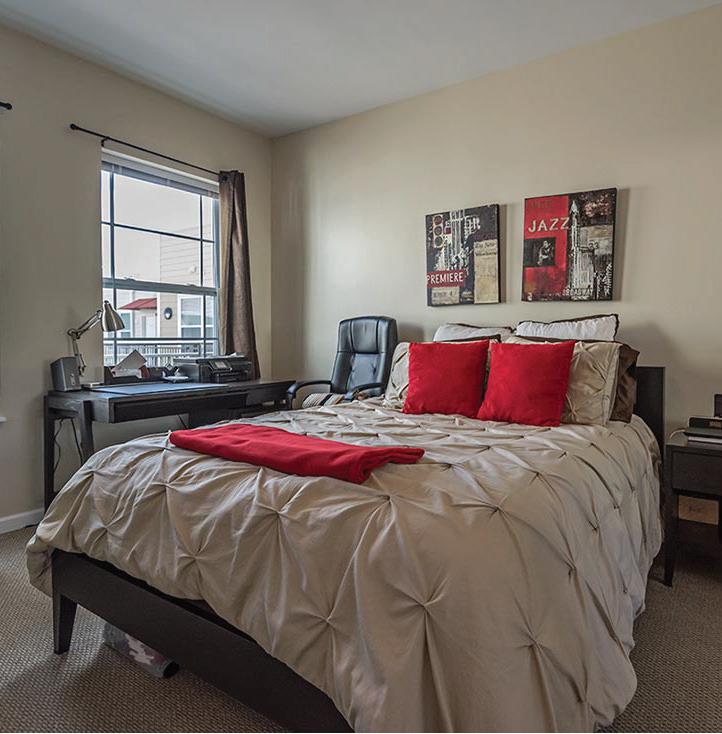

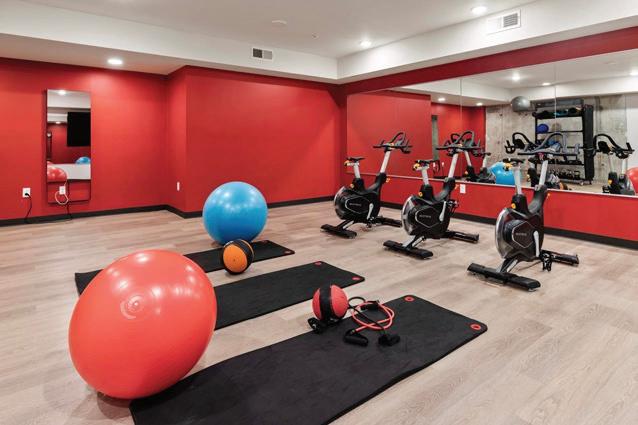

By Mateo Fuentes-Rohwer matfuent@iu.edu | @mateo_frohwer
When deciding on a place to stay, students must consider a variety of factors, ranging from the price of rent to the location. But there is one thing that is often overlooked above all else: is the building owned by a landlord or a property management company?
By de nition, a landlord is a person who directly owns the building, house or apartment that is leased or rented to another person. ere is no bu er between the tenants and the landlord, and most decisions need to be passed through them.
On the ip side, a property management company deals
with the day-to-day running of the building, house or apartment while acting as a third party between the tenant and the landlord. e landlord is the one who hires the company.
Both instances provide positives and negatives. For a landlord, dealing directly with the person who will help your living situation is ideal. Any questions, needs or wants can go directly to them without any bu er.
However, that can also be a positive for having a property management company. Not having to worry about dealing directly with a landlord can be helpful, and having a representative between the tenant and landlord can provide more stability and mediation for issues
that arise.
ing it can make decisions about maintenance and other aspects of the house or apartment. It might not make-or-break





both parties would
e two situations also provide drawbacks. Landlords may not deal with the building, house or apartment full-time, which means they won’t be able to provide help or solve issues as quickly as a tenant may want. at fact may also lead to a lack of communication, which could cause more trouble than both parties would want.


A property management company may increase the
A property management company may increase the price of rent in order to cover the costs of nancing the company. It also could decrease the amount of control a tenant has, consider-













ment company is involved can



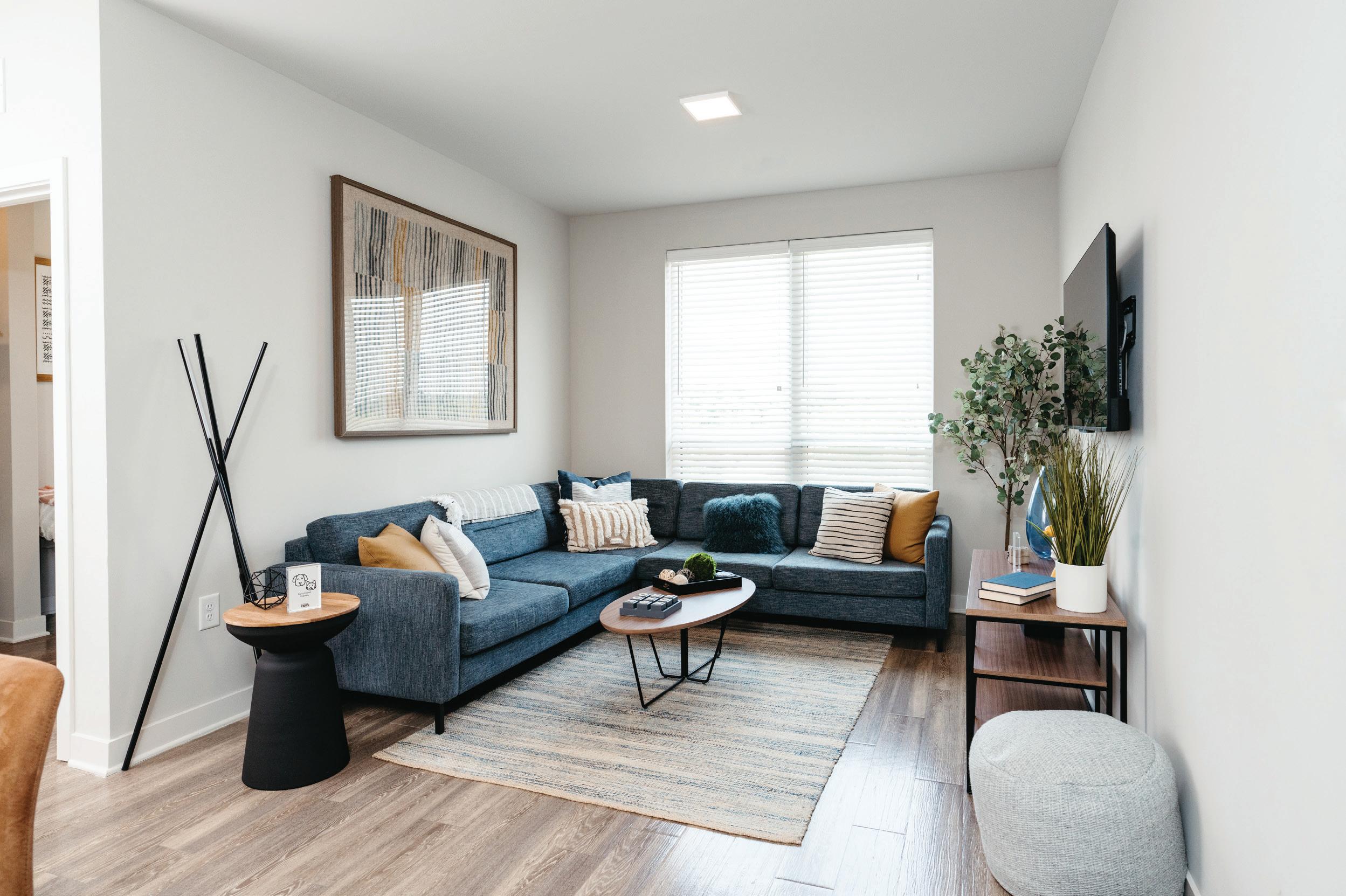

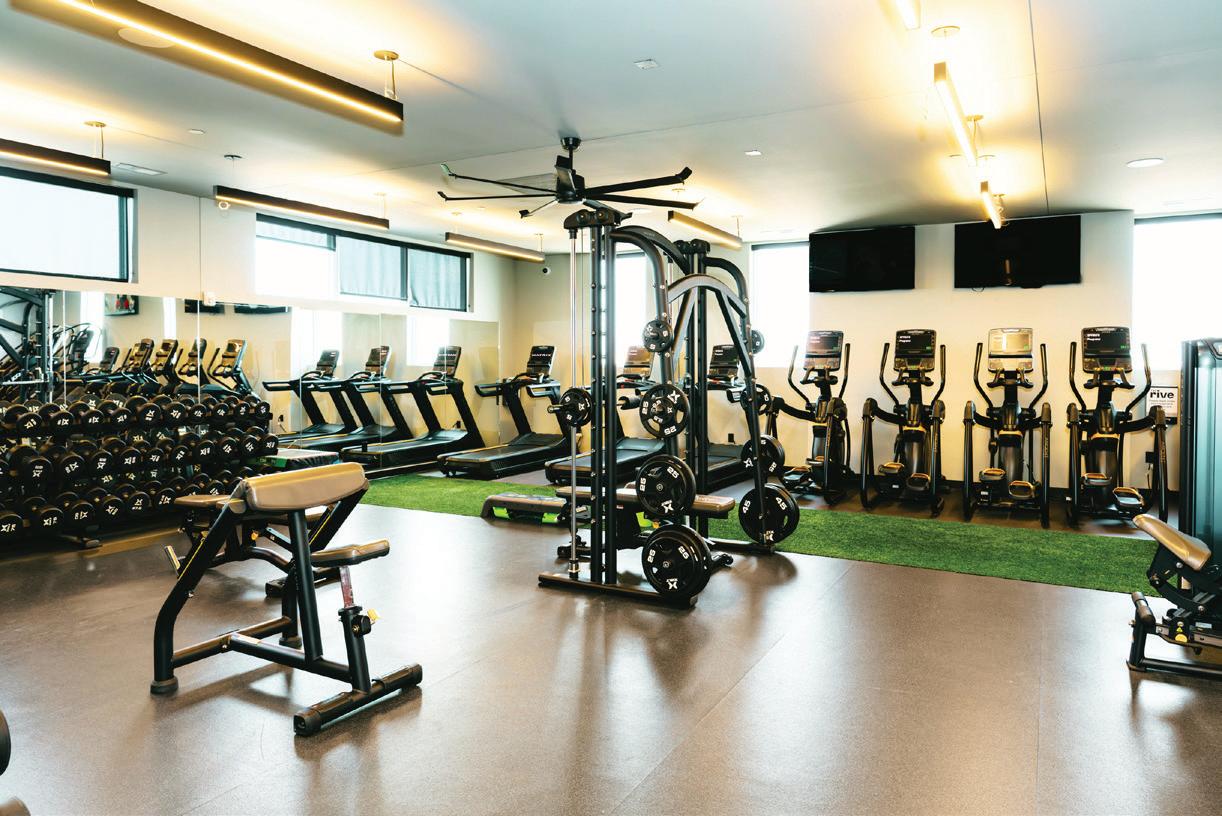
The Rive features fully-furnished apartments—from timeless studios to modern 4-bedrooms—and amazing amenities, like a rooftop pool and patio. Just minutes from campus and downtown, it’s the perfect spot to love life at IU.







By Arnaav Anand arnanand@iu.edu
Finding housing at the last minute can feel like a race against time, but there are still plenty of ways to secure a place to stay. Whether you’re a procrastinator or dealing with unexpected circumstances, these strategies can help you nd housing fast.
Make a list and check it twice
Before you start frantically searching for available housing, it’s important to be clear on exactly what you want and what you can live without to help make faster decisions.
Are you looking for a private room or are you open to sharing? What is your budget and how exible can it be? How close do you want to be to campus? Having a set of deal breakers like a lack of an in-unit laundry facility can further help you narrow down your options right o the bat.
Landlords are more inclined to favor applicants who have all their paperwork in place. Orga-
nizing your documents such as government-issued IDs, proof of income or nancial aid, rental history, renter’s insurance and guarantor information, can give you an edge over other applicants.
Listings move fast so move faster
Di erent platforms have different listings. Cast your net as wide as possible and utilize multiple websites like Zillow.com, Apartments.com and Rent.com. If noti cations aren’t an option, manually check listings several times a day. Facebook groups can also be instrumental in nding subleases residents post.
If you nd something that checks most of your boxes, be prepared to act quickly. Reach out to the listing’s associated contact over the phone or by email immediately, schedule an in-person or virtual tour, submit an application and have your deposit ready. Be open to scheduling as many viewings as you can in one day to save time. If it’s a sublease, be sure to inquire about the leasing process.
If you aren’t seeing any listings you want, the process is too overwhelming or you just don’t have the time or patience to scroll through listings endlessly, real estate agents can be a game changer. Agents know what’s available and can line up multiple showings much quicker while also guiding you through lease agreements, deposits, legal terms and other paperwork. A good agent might also help you get a better deal on the rent. The more specific you are, the faster they can help.
Real estate agents typically charge a broker’s fee, which is usually one month’s rent. Before committing, ask upfront about their fees and conditions. Apartment listing sites often have agent contact info. Other students or university housing services may know agents who help with student rentals. Agents work with multiple clients so once they send you a listing, don’t sit on it.
Desperate times call for desperate measures
If luck isn’t in your favor, there are plenty of short-term xes and alternative housing options that can keep you covered while you keep looking.
Expanding your search to localities further from campus can open up a wider array of options. If a bus route can get you to class easily, don’t rule out places a few miles away. In fact, rent is often cheaper the further away the property is from campus.
Students who constantly move in and out for internships, study-abroad programs or midyear transfers — look for their subleases on Facebook groups. As a last resort, consider a temporary stay at Airbnbs or hotels to give you an extra few weeks on the house hunt.
Watch out for listings with suspiciously low rent or anyone asking for payment before you’ve seen or con rmed the place. Never wire money, send deposits through Venmo or gift cards or sign a lease without verifying the landlord and property.

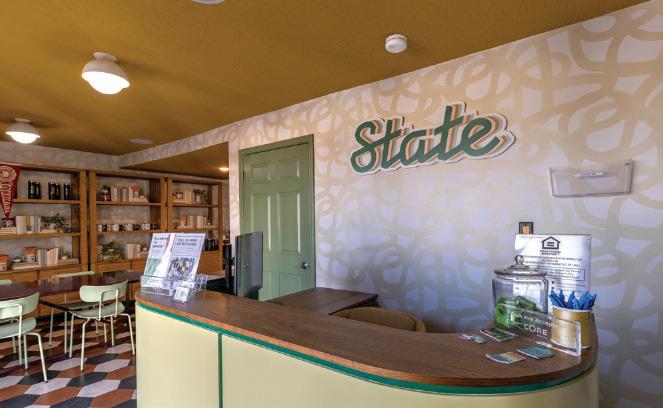

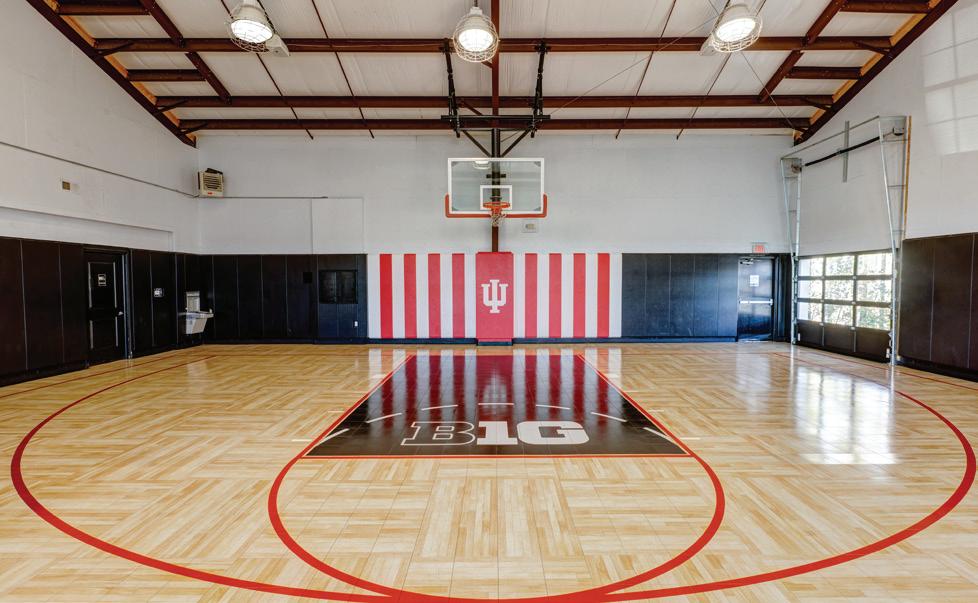


From unit upgrades and amenity renovations to our signature Lifestyle by Core resident appreciation program -you won’t believe what we have in store at State Bloomington!
We o er fully-furnished Studio - 3 Bedroom apartments. Plus, our units are pet friendly and individually leased!
Tour today to learn more information!
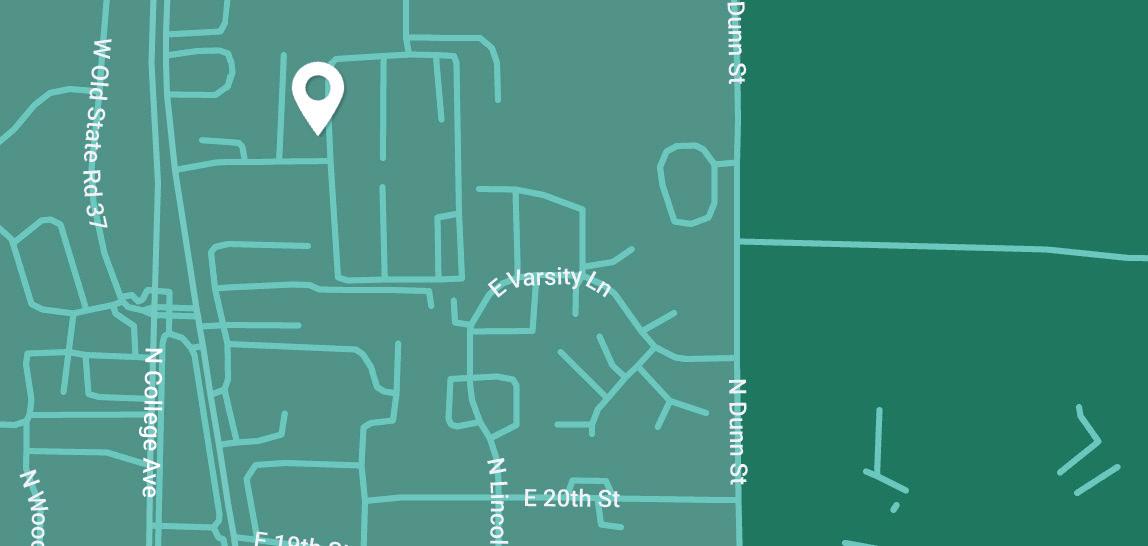


By Jack Forrest jhforres@iu.edu
When looking for a new place, it’s important to keep in mind what amenities you’re after and if you’ll be responsible for paying for utilities separate from your rent.
Amenities can vary. Apartment complexes with higher rent, like Evolve, typically offer perks including fitness facilities, outdoor and indoor common areas and swimming pools. Other local apartment complexes may offer fewer amenities but at a lower cost.
Many student-oriented apartment complexes include all or some of your utilities in the cost of rent. They can include furnishing, as well. At The Quarters, for example, rent
includes internet, water and sewage, but electricity costs are up to the renters. If you rent a house, duplex or other dwelling, you’re more likely to be responsible for utilities.
If you are responsible for utilities, there are a few places you can begin.
City of Bloomington Utilities includes water, wastewater and weekly trash and recycling pickup. To get started, visit the individual customer contract online. Here, you’ll provide a form of identification, list your address, add when service should begin and set up billing preferences. You can pay city utilities online, by phone, by mail or in-person.
To set up electricity payments, first check who your
provider is. You can ask your landlord or try checking your electricity meter. Duke Energy also has a web page that can tell you if it’s your provider or not.
Duke is the service provider for much of Bloomington. If it’s yours too, go to the Duke “Start Service” page online. To get your payments started, you’ll need your new address, date of service and identification.
After you get set up, you can pay your bill online, by mail, by phone, in person or with autopay. You can also use the Duke Energy app to pay your bill and monitor your electricity usage.
If your first electricity bill seems a little high, don’t worry. That also includes a security deposit. According to Duke, residential customers will get that
deposit back after nine consecutive months of on-time payments or 12 months with two or fewer late fees.
If you need natural gas, CenterPoint Energy is the provider for Bloomington, according to the city website. You can get started on service through its website. Consider enrolling in “budget billing,” which divides your annual bill across 12 months. That way, you won’t be surprised by higher energy bills in the winter.
It’s important to be clear what you’re responsible for paying or not when you sign your lease. If you’re not sure, feel free to ask who you’re renting from. IU Student Legal Services also offers free lease analyses via appointment.
By Meghana Rachamadugu megracha@iu.edu
Whether you live in a dorm with a mini fridge or an apartment with a full kitchen setup, having a few essentials on hand goes a long way: satisfying late-night cravings, serving as a snack between classes or just having a quick, no-fuss meal after a long day. No matter the budget or amount of storage, try and stock up on some items throughout the month so you’re
always prepared. A good rule of thumb is to buy non-perishable items that tend to last longer. However, lots of grocery stores (even the C-Stores) have a good selection of frozen items that also su ce. Here’s a list to reference the next time you go shopping. Feel free to adjust according to tastes, seasons and availability.
Grains/Carbs
» Pasta/noodles
» Rice
» Boxed macaroni/instant risotto/ ramen kits
Canned Products
» Beans/legumes
» Pasta sauces
» Salsa
» Broths: veggie, chicken, beef, etc.
» Soups
» Fruit
» Protein: sh, chicken, beef
Frozen
» Pizzas
» Microwave meals (ex. burritos)
» Burger patties/meatballs
» Protein: sh, turkey, chicken, etc.
» Breakfast items: wa es, sandwiches, hashbrowns, etc.
Miscellaneous
» Cereal
» Potatoes (produce, but last up to three weeks)
Deending on the store, you’re bound to nd more or less of these items. But hopefully, it makes the process of planning ahead less daunting.





By Ursula Stickelmaier ustickel@iu.edu
If you’re new to Bloomington, getting around can be daunting. Luckily there are so many transportation options for students to use to get to campus, downtown Bloomington or anywhere in between.
Bus
One of the easiest and best ways for students to get around Bloomington is by bus. ere are two di erent bus services to help you navigate campus and the greater Bloomington area: Bloomington Transit and the IU Campus Bus Service.
e IU Bus Service can take you around many places directly on campus, as well as select places o campus such as College Mall and the Jackson Creek Shopping Center. Bloomington Transit is another great bus option for any place you are looking to go in the greater Bloomington area. With a valid CrimsonCard, both bus services are
free to IU students with the
exception of the 11, 12 and 14 routes on Bloomington Transit, which require a fare. e buses can also be tracked in real time on the ETA SPOT app.
Whether you have one or you are looking to get one, a bike is a great way to get around campus. Students who bike to and from school can park their bikes while they are in class at one of the several bicycle racks available on campus. You can also rent a bike locker on the IU Housing website at $100 for the academic year and $50 after Jan. 1 or nd an available spot at the Ballantine Bike Hub where those with a valid CrimsonCard can lock up their bikes inside for free. Students who bike to campus are required to register their bikes with the school and purchase a $10 bike permit. is registration can also help you le a report to the IU Police Department in case your bike is stolen. For biking around
Bloomington, bicycle racks can be found around the town and a map of bike paths is
available on the City of Bloomington website.
If you have a car that you’re looking to drive to campus, a parking permit is necessary. Available on the IU O ce of Parking Operations website or to buy in person, there are a wide range of permits available to students depending whether they live on campus or not. Students can buy a year long all day parking pass for $177.48 or an all day pass for fall or spring semester for $88.76. You can also purchase an evening only pass for the entire year or just a speci c semester ranging from $44.28 to $88.80.
agement website under “rideshare.”
When the weather is nice, Bloomington is a great place to walk around. Everything on campus is a pretty walkable distance, and if you are trying to get to downtown Bloomington, all you have to do is walk past Sample Gates.
IU also o ers a map of outdoor walking trails on the Healthy IU website for students looking to explore the campus more. If you are walking alone at night, IU has also taken precautions to make sure students feel safe. Emergency call boxes are located along main paths around campus allowing students to press a button and get in contact with the IUPD if they ever feel unsafe. IU also o ers a program called IU Ride which o ers students free rides from the hours of 8 p.m. to 1:45 a.m. every day of the week should they need one. ese rides should be requested ahead of Transportation Demand Man- time either on the IU Ride app
Free parking is available at speci c locations on campus, but primarily during weekends, IU breaks and select holidays. IU also o ers a rideshare program called Hoosier Rideboard which helps IU students, faculty and sta schedule carpools with each other. It’s free to register and can be located on IUs Transportation Demand Man-







By Natalia Nelson nelsonnb@iu.edu
Takeout and meal plans can be expensive, and cooking on your own can be daunting — but it doesn’t have to be. Here are a few tips on how to tackle preparing food:
Preparing meals ahead can save time in the long run. When it comes to meal prep, food storage containers are a must to pre-portion meals and easily grab them from the fridge.
Don’t leave leftovers in the fridge for too long. Keep them in sealed containers and toss them after three or four days. Storing food in the freezer for up to four months can extend the life of meals.
Pinterest and Instagram are
both great places to get recipes that make four to six meals, which can then be divided up into individual meals. An easy place to start is to pick a protein, vegetable and carbohydrate that pair well together. Some good examples are sausage, tomatoes and pasta or beef, rice and broccoli.
Investing in an air fryer is an easy way to cook meat, potatoes, vegetables or tofu quickly and without standing over a stove.
ey’re user-friendly, don’t take up much counter space and cook faster than a traditional oven.
If you’re only cooking for one, you can get away with only grocery shopping once a week. Go in with a pre-planned list to avoid making impulse buys or forgetting an ingredient.
To stick to a budget, try Aldi or Kroger. Dry goods like rice and oats in bulk can also help you cut costs. Generic brands are also generally cheaper than name brands and have similar ingredient lists.

Be careful with raw meat in the fridge. Raw chicken, seafood and ground meat should only be kept in the refrigerator for one to two days. Other raw meat like steak and pork can be kept safely refrigerated for three to ve days.
To extend the life of meat, store it in the freezer. Ground meat and poultry can stay in for up to four months, and beef, pork and lamb can be stored for up to a year.
Get a meat thermometer to ensure that the meat you cook has hit a safe internal temperature.

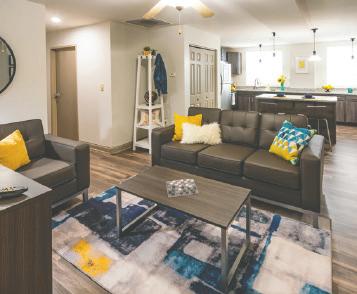


Make sure to measure the thickest part of the meat and wait a few seconds for the reading to be accurate.
Continuously check the expiration and sell-by dates of what you keep in the fridge and toss anything that smells or looks suspicious. Dairy milk can be kept for about a week after opening and eggs are good for three to ve weeks.

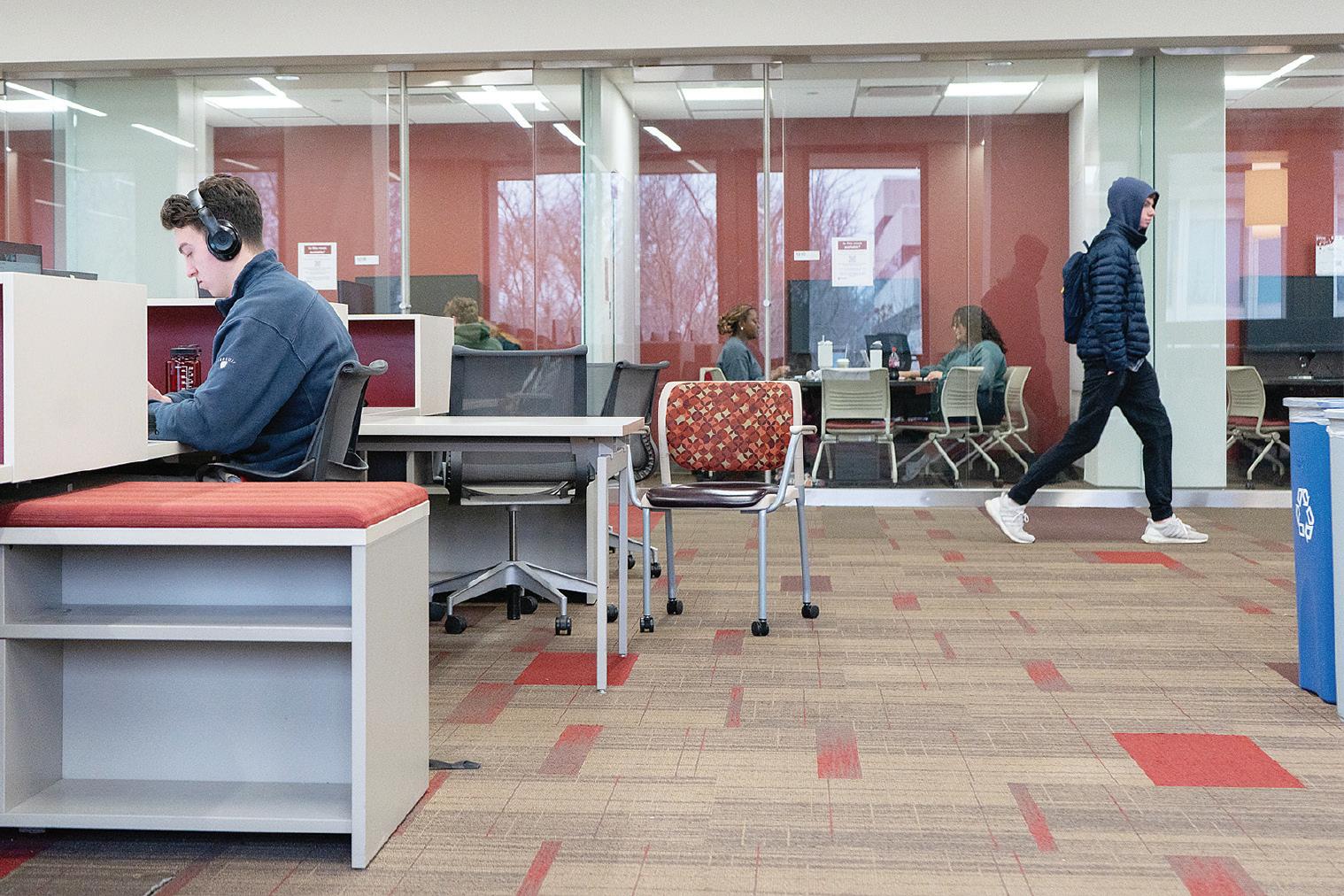
By Ayzah Khan ayzkhan@iu.edu | @ayzahfkhan
An appropriate environment away from your dorm room can make all the difference when it comes to your productivity levels and focus. While some students thrive in lively spaces, others prefer quiet surroundings to avoid distractions. With preferences varying, Indiana University offers a variety of locations that cater to the different needs and wants of students. Here are some of the best study spots on campus:
Herman B Wells Library
• Hours: 8 a.m. to midnigt most days
• Contains designated quiet zones
• Access to private study rooms, computers,
printers and study resources
• Group study spaces
• East Tower contains quiet study floors
• Accessible for late-night studying
IMU South Lounge Starbucks
• Hours: 7 a.m. to midnight
• Quiet and cozy atmosphere
• Convenient snack options
• Spaces can fill up fast during peak exam season
Luddy Hall Study Spaces
• Hours: 7 a.m. to 11 p.m.
• Study-friendly environment with open seating, quiet study rooms and collaborative spaces
• Tech-hub with highspeed Wi-Fi and resources
• Open area and natural bright lighting
• Hours: 9 a.m. - 8 p.m.
• Considered to be a quieter and a less busy location
• Access to materials and specialized resources
• Offers study spaces and access to computers
• Is not open as late as other locations
• Hours: 6 a.m. - 10 p.m.
• Spacious seating including individual seating, lounge areas and group study rooms
• Allows for both silent work and group discussions
• Is not open as late as other locations and can get crowded easily
At the end of the day, the best study space depends on your personal study habits, whether you prefer a collaborative environment or prefer silence. With so many options available, finding your ideal spot away from your dorm room can transform your academic success at IU. From the silent floors of Wells Library to the cozy atmosphere of IMU South Lounge, each space has something different to offer. By trying different locations and discovering what works for you, you’ll find the perfect environment to boost your productivity.
By Will Kwiatkowski wdkwaitk@iu.edu | @wkwiatkowski_15
Going to the gym can be chaotic, from scheduling time to choosing the right out t. Fortunately, Indiana University o ers plenty of options — your only challenge is nding the best t.
e two main campus gyms students frequent are the Student Recreational Sports Center and the Bill Garrett Fieldhouse. Both o er various amenities to suit all workout styles and are free for students with a Crimson Card.
e SRSC, located at 1601 Law Lane, was recently renovated and reopened in fall 2024. Featuring strength and cardio areas, an Olympic-sized pool and multiple courts for racquet-
ball, squash and basketball, the SRSC caters to a variety of athletic interests.
With amenities such as equipment checkout, locker facilities and a wellness studio featuring HydroMassage and Cryolounge for muscle recovery, the SRSC provides a comprehensive experience for all its visitors.
e SRSC o ers extensive hours to accommodate students’ schedules. It is open 6 a.m. to 11 p.m. weekdays, from 6 a.m. to 9 p.m. Friday, from 8 a.m. to 9 p.m. Saturday and from 8 a.m. to 11 p.m Sunday.
Located at 1025 E. 7th St., the Bill Garrett Fieldhouse features two strength and cardio areas, 10 basketball and volleyball courts, multipurpose gyms and an indoor track. It serves as a
hub for recreational sports.
Weekday morning hours are sporadic at the Fieldhouse. e courts and strength gym are open from 6-8 a.m., 11:30 a.m. to 1:25 p.m and 4-11 p.m. Weekend hours are from 8 a.m. to 9 p.m. Saturday and from 8 a.m. to 11 p.m Sunday.
In addition to the two campus gyms, Bloomington boasts several franchise gyms that complement your campus tness options.
Anytime Fitness on East ird Street is a 24/7 gym ideal for those with unpredictable schedules. It o ers strength and cardio equipment, private showers and personal training for a exible workout experience.
Planet Fitness a 3477 W. ird St.is another budget-friendly,
24/7 gym. It o ers a welcoming and inclusive environment, making it ideal for those seeking a friendly gym experience.
Orangetheory Fitness provides cardio and strength equipment, including treadmills, rowing machines, and free weights. Workouts are heart rate-based, with participants using monitors to track intensity and stay in optimal zones.
ere are two Orangetheory locations in Bloomington: one at 3477 W. ird St. and another on Kirkwood Avenue, which is especially convenient for students coming from campus.
Whether you prefer the SRSC, the Bill Garrett Fieldhouse or local franchise gyms, there’s something for every schedule and workout style.



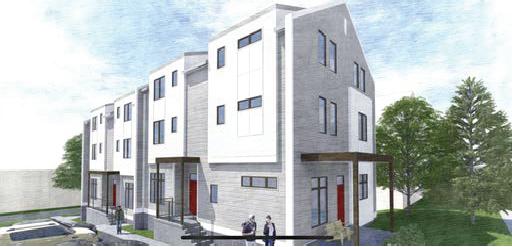
By Ainsley Foster ainsfost@iu.edu
When I was 16, I walked through the front door of my house with a tree. You read that right: a tree. After I lied to my mom about how much it cost, I took the tree upstairs to my room, where it blended in nicely with what the rest of my family referred to as my “jungle.”
Now I live in a dorm. What’s left of my “jungle” now lives with my sister, or in my dad’s o ce. If you are looking for a green way to liven up your place, take a leaf out of my jungle and look at some of the plants I have found to be budget-friendly, easy to care for and pet-friendly (though I can’t guarantee your furry friend won’t try to knock them over).
Spider plants are recognizable for their arching leaves and ability to produce o shoots, which can be easily propagated to create new (and free) plants. When given well-draining soil, indirect light and occasional watering, these make for excellent lowmaintenance additions. Spider plants are an ideal plant for beginners, especially those with limited space. ey are also a great air puri er, removing harmful pollutants from the air. Whether placed in hanging baskets, on shelves or side tables, these resilient plants bring a touch of greenery and a breath of fresh air to any indoor space.
Also known as Neantha bell, these adorable, slowgrowing ferns are perfect for brightening up any space. You can nd one small enough for your nightstand, large enough to ll that corner in your living room and any size in between at most stores. Parlor palms prefer bright, indirect sunlight and watering (every one to two weeks). Don’t fret if you forget about it every once in a while; these plants are known to be incredibly resistant and can often tolerate less-than-ideal growing conditions. Parlor palms are also known for being air puri ers, helping to reduce airborne pollutants in your home. Because they are quite
low maintenance, they make a great choice for busy students.
If succulents are more your vibe, be sure to check out my favorite variations from the Echeveria family! Echeverias come in a variety of shapes and sizes, making them an eye-catching addition to any space. Unlike most succulents, which can be temperamental and require speci c living conditions, echeverias are very easy to care for and require minimal e ort to keep them looking their best. ey are also known for their ability to adapt to di erent environments, making them an excellent choice for beginner plant owners.






















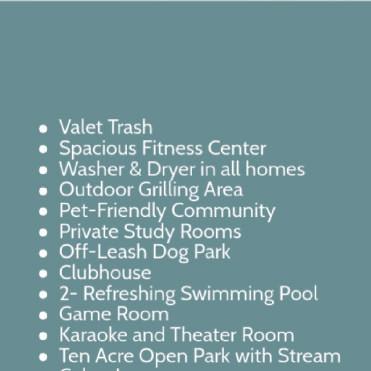




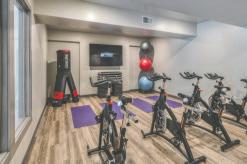






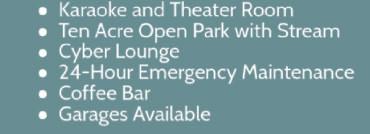






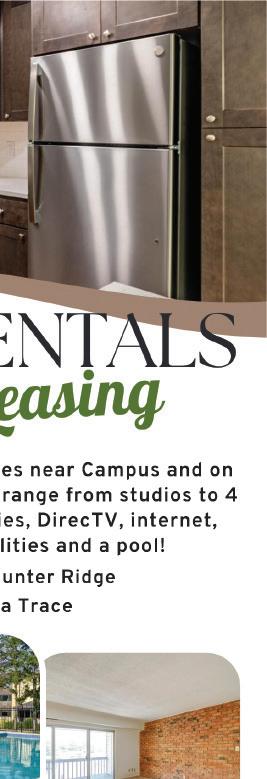

























By Leila Faraday lfaraday@iu.edu
Most college students not only want to be wise with their money, but they also need to. Having a budget that appropriately covers food, rent and tuition expenses is essential, but students should think about additional expenses to prepare for beyond those obvious costs.
Before starting a semester, you should know what forms of transportation you’ll be relying on to get to class, work, home and other obligations. If you’re relying on a car, you should be ready to set aside roughly $50-$200 for a campus parking pass and $30-$150 per month for gas, depending on
how much you will be driving. Additionally, if you do not have a car or plan to be out late at night, you will want to have some money to spend on rideshare services, which can cost upward of $2-$15 per ride depending on the time, distance and occasion. IU helps subsidize the cost of rides during later hours.
Some apartments and dorm buildings require residents to pay for laundry services. If you know you’ll have to be paying to do laundry, either in an oncampus dorm, an apartment or through a laundromat, plan to budget at least $1-$2 per load, which may add up to roughly $5-$20 throughout the month.

If you live o campus, especially in a house, you are often expected to take care of many typical home maintenance tasks on your own. is might mean cleaning mold, changing light bulbs, replacing batteries, shoveling snow and ice and xing drain clogs. Many landlords or rental companies will handle basic landscaping, such as mowing the lawn or cleaning the gutters.
To prepare for basic home maintenance expenses, be sure to purchase a simple toolkit, extra batteries for smoke detectors and appliances, lightbulbs and proper cleaning supplies. ese expenses will vary, but by preparing these materials ahead of time, you
can expect to spend less than $100 on everything listed above.
Above all, it is important to have an emergency fund — if you can. Little by little, set aside as much money as you can, within reason, so that you have savings to dip into in the case of an unforeseen event. ough the ideal amount for many adults to be able to set aside is three to six months of living expenses, this is unrealistic for most college students without full time jobs. Several hundred dollars is a great start for preparing to deal with common emergencies such as parking tickets or towing fees, car maintenance or broken technology.
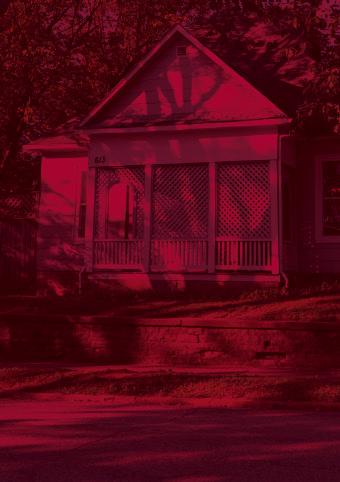

By Mike Badrov mbadrov@iu.edu
I love food. It’s one of my favorite things about the world, and a simple meal can bring the greatest memories. Its only drawback is that it costs money, and like other college students, I don’t look at my bank account with a smile. But I digress — Bloomington o ers a ton of cheap eats around town that will leave you going, “I can’t believe it was only that much.”
Right on Kirkwood Avenue, Goodfellas is known as one of the staple pizza places o campus. For just $4, a fresh foot-long pizza slice could be your next affordable meal. e portions here are giant and, more importantly, leave you satis ed without hav-


ing to break the bank. As a lactose-intolerant person, this isn’t always my rst option when it comes to eating out, but it should be one of yours.
Right across the street from Goodfellas, Z & C o ers hefty portion sizes for more than reasonable prices. I got their chicken bowl for $8.25, and couldn’t nish all of my food. It’s quick,
it’s cheap, it’s good — it’s Z & C.
Where do I start? Gameday deals? Check. Great combo meal prices? Check. AMAZING FOOD? Check. WingsXtremeU has it all, and it has been my go-to for good comfort food at insanely reasonable prices. I’m not trying to be promotional here, but $1 boneless wings from 11 a.m. to 6 p.m. every Friday
should trigger some sort of ight response in a college student’s brain.
Right on ird Street, Lucky Express is yet another Asian cuisine stop for any hungry college student. It’s the only one on this list I haven’t tried yet, but I can tell you after jealously looking at others who have: the large food portions are worth it. Dishes like Kung Pao chicken and pork with garlic sauce are calling my name, and could be calling yours for the well-ratioed price of $14.
I implore every hungry IU student to try at least one of these places the next time they are thinking about eating out. ese spots could save hungry students from empty stomachs and empty wallets.

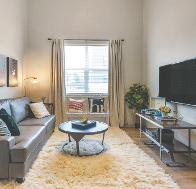
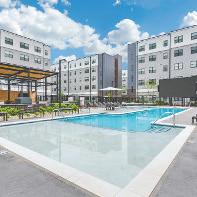

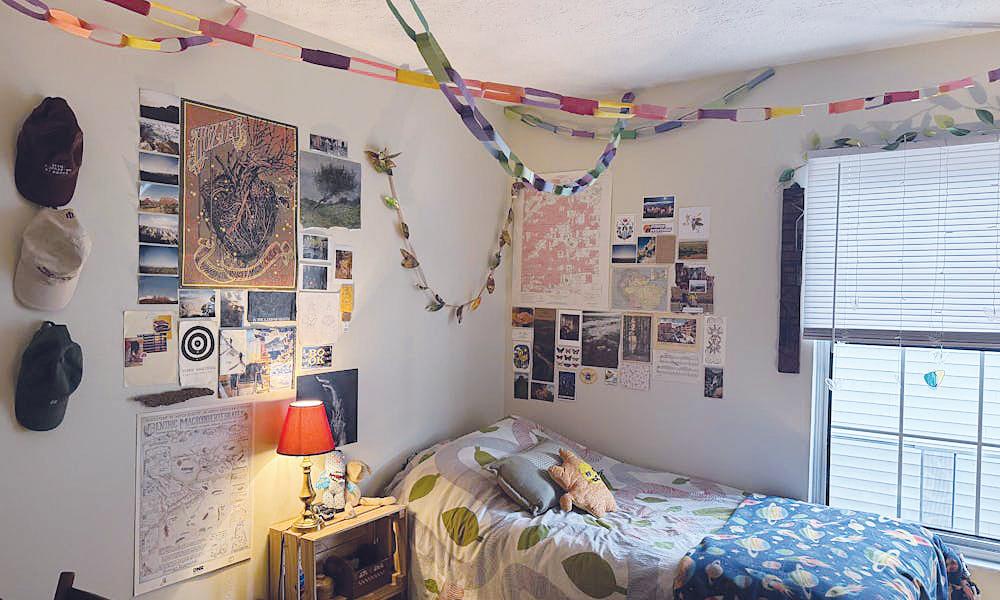
By Eva Remijan-Toba eremijan@iu.edu
As college students, we often move from one place to another, but that doesn’t mean we can’t make each space feel like home. It’s important to decorate a space that reflects who we are. Decorations don’t have to break the bank — so here are some spots to find affordable pieces for your space:
A low-effort way to add personality to your room is with posters or prints. If you’re not using a frame, make sure to use renter-friendly adhesives like tape, push pins or Command Strips to avoid any damage.
Locally, Gather on North Walnut Street offers all kinds of prints made by local artists. The woman-owned store also holds DIY events for those looking to make their own art.
If you find posters you like online, print them yourself for cheap! Download the photo or print of your choice, then send them over to FedEx, Walgreens or CVS to print for a quick pick up.
Center City Print is a Pennsylvania-based business and functions in a similar way to the other companies mentioned above. Just upload the photo you’d like to have made into a poster, add it to your order and they’ll deliver it to you at a reasonable price.
If you’re in search of something unique, thrift stores or second-hand sites are the perfect places to explore. Offering one-of-a-kind finds at unbeatable prices, vintage shops are full of hidden treasures.
Locally, Bloomington Antique Mall on Seventh Street is
a gold mine of cheap IU memorabilia, old street signs, classic records, posters and more. It might take a little time to explore its three levels, but the hunt is worth it.
While many go to Goodwill for clothes, the thrift store chain also offers a selection of frames, mirrors, records and furniture.
Facebook Marketplace is a helpful resource for finding pre-owned decorations or furniture. Prices are typically very affordable, and you can sometimes score items for free.
Greenery can always brighten up a space, so don’t shy away from plants. If you’re worried about keeping plants alive, look for low-maintenance houseplants like jade plants, string of pearls or Chinese evergreens.
Locally, oak. on Sixth Street has plenty of plant options, big and small, all at an affordable price point. Take a look at their candles and flora-inspired wall hangings as well.
If shopping for decorations feels like a challenge, why not make them yourself? It’s a fun way to personalize your space and it can be a great activity to enjoy with friends!
Locally, Art Remains Creative Reuse Center on College Avenue, in the basement below Goods for Cooks, sells used art supplies at affordable prices. Bring out your creative side and paint on a canvas, draw pictures, make garlands or whatever your heart desires.
Any dollar store will have budget-friendly art supplies, whether it’s canvas packs, paint sets or drawing utensils.

By Leila Faraday lfaraday@iu.edu
If you’re living in an unfurnished house or apartment this year, finding all the furniture you need to fill it can be a significant expense. Below are some ways to maximize your budget and space.
Brands and retailers that sell cheaper furniture include IKEA, Wayfair, HomeGoods, Marshalls, T.J.Maxx, Target and Amazon. It is important to be aware of the types of materials and composition of what you are buying — not all affordable furniture is made equally. However, it is sometimes okay to compromise on quality,
as many of us will not keep the furniture we have in college for more than a few years.
Look for furniture held together by more than glue or staples, as well as pieces that use solid blocks of wood or metal, rather than veneer covers.
To balance price with quality, decide which pieces you are willing to compromise on, and which you may want to look nicer. For instance, you might choose to prioritize a nice mattress and couch — as you will be spending a lot of time on those things — but opt for a less durable desk, lamp or dresser.
Beyond buying new furniture, the best, but sometimes
overlooked, method to get high quality, affordable furniture in a sustainable manner is to take advantage of local thrift stores. Facebook Marketplace, Craigslist and other buy, sell, trade platforms are helpful, too. IU even has its own, called “Buy/ Sell/Trade” on the One.IU website. Plenty of people are always moving in and out of Bloomington, you can often find heavily marked down pieces through these channels.
Another method of finding used furniture is to peruse the streets during move-out week in May, as many people will put the furniture they plan to give or throw away on the sidewalk. My roommates and I found our coffee table the week we moved
into our house — it was just sitting on the curb outside the house across the street from us.
To make your money and space go further, opt for furniture with multiple uses. Choosing a nightstand with drawers, a bed frame with storage or a raised platform underneath are effective ways to maximize your space.
As a college student, you should also be sure to take advantage of any student discounts offered by retailers — Target, for instance, typically offers a 20% discount on purchases made in the late summer months, which can add up for bigger pieces.

Along with this decorative freedom is a certain level of self determination that on-campus housing doesn’t o er, determined by space and location. Hosting parties and hangouts in a house is far easier than trying to squeeze people into an apartment. You’re out of the dorms, time for some space!
With your own outdoor space, you can enjoy a quick breath of fresh air without having to walk down ve ights of stairs or wait for an elevator. Outdoor activities with your roommates are also easier, like grilling or hanging on a porch on a beautiful night. is is extremely important for Little 500 weekend.
Di erent locations in town can also in uence more of your daily routines and habits. Living closer to Kirkwood Avenue lets you explore Bloomington on your feet. You can check out events downtown, walk home from parties and explore new restaurants without having to worry about parking or Uber prices.
Living in a house with your best buds lets you get that sense of self-determination that many are looking for in college. With your own space, responsibilities and routines, there’s a reason people tell stories about their downtrodden but lovable college house.





















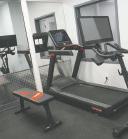























































































By Ainsley Foster ainsfost@iu.edu
ere’s so much to love about being a resident assistant. By far, my absolute favorite perk is being on campus; there are so many bene ts to being right in the heart of college life, here’s just some of what makes living on campus rock!
Location, Location, Location
is is an obvious one. Living on campus eliminates the stress of commuting, saves you from battling for a parking spot before class and ensures that your walk to class is short and manageable—especially nice considering Indiana’s weather. You also have easy access to campus resources like the library, Indiana Memorial Union, dining halls and academic buildings. If you have a meal plan, that’s one less thing to worry about in your already busy schedule. Another huge perk? e cost of living on campus includes utilities like water, electricity, WiFi and laundry. ese are expenses you don’t always think about until you’re responsible for paying them monthly. Not having to stress about rent, internet bills or a uctuating electricity bill means


you can focus more on your academics and social life. College can be overwhelming, but living on campus simpli es the logistics so you can concentrate on what really matters.
Some of my fondest memories living on campus have been spent with the people who live just down the hall. As an RA, one of the most rewarding parts of the job is watching a oor of strangers turn into best friends, study buddies, Greek Life siblings and more. Living on campus creates an environment where meeting new people and forming meaningful connections happens naturally.
So much to do!
Living on campus means you

pay an activity fee. at’s money your RA gets to spend putting on events for you, so make the best of it! So, shameless plug: go to events in your residence hall or on-campus apartment (your RA worked really hard to make it happen) and make some friends! Beyond your residence hall, there are plenty of on-campus events hosted by the IU Auditorium, Late Nite, the IMU and countless other student organizations that you can attend make more social connections. Being on campus allows you to fully immerse yourself in the college experience, participating in events and activities that you might otherwise miss. e convenience of being close to academic resources, such as libraries and clubs, can also enhance your academic performance.
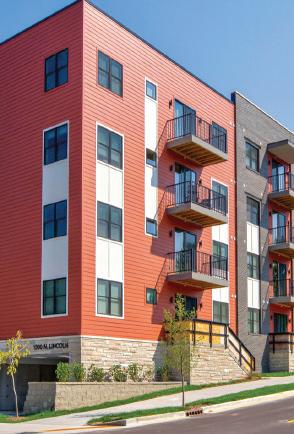
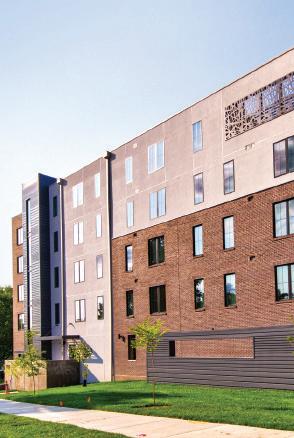

By Ursula Stickelmaier ustickel@iu.edu
Having a pet in college can be fun. But, like anything else, there are plenty of rules and responsibilities that come with living with animals. Here’s what you need to know about having a pet while you’re in school.
According to the IU Housing rules and regulations website, pets like sh or crustaceans are allowed to stay in IU housing. Any other pet that is not a service or emotional support animal is not permitted to stay. Anyone in violation of this policy is at risk of having their housing contract cancelled and being billed to cover the cost of any inspection related to an unapproved animal.
For students with service animals or emotional support animals, they must be approved by IU before bringing them on to campus. ere are two ways to start this approval process, either contact IU’s Accessible Educational Services or email the Housing Assignments O ce.
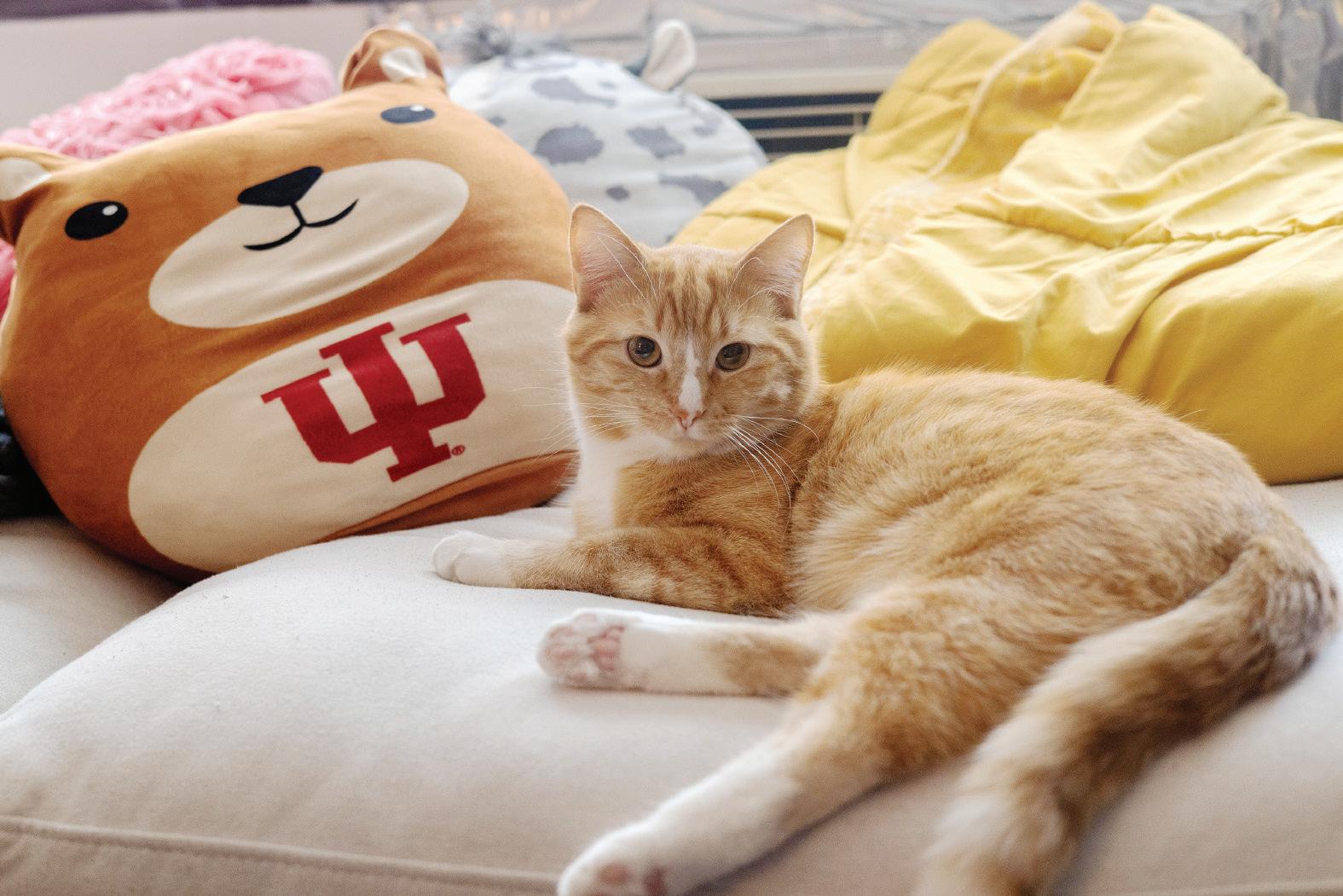





Service animals are permitted anywhere that their student is, so long as they don’t pose a threat to campus health and safety. However, emotional support animals must follow di erent guidelines. Students with an emotional support animal that live on campus are only allowed to keep them in their on-campus residence.
fees that come with property damage caused by their animal. Luckily, there are plenty of ways to pet proof your apartment or house to keep you safe from potential fees.



If you’re living o campus with a service or emotional support animal there are important things to remember there too. Under the Fair Housing Act, pets that are considered assistance animals cannot be subject to an initial pet fee. However, to qualify for this you must provide the appropriate documentation from a licensed healthcare professional conrming the need for the animal.
Even though service animals and emotional support animals have their initial pet fee waived, all pet owners can be subject to
Cat owners are encouraged to put a mat of some sort underneath their pet’s litter box in order to protect their oors from any litter that might be kicked out. While there are many cat litter mats available to buy online, cheaper alternatives include using a tarp or even a yoga mat to prevent litter from getting all over the oors.
If you’re worried about
furniture or any posts getting scratched up, investing in antiscratch tape is a great option. You can also get scratching posts for your cat or chew toys for your dog that might take away any boredom that might be related to these issues.
Finally, a good way to keep your pet out of anywhere they are not allowed to be is by getting a gate of some sort to block o certain areas. Whether it’s because of a possible danger to your pet or threat to that part of your house, these gates can be a great way at setting boundaries with your animal.
By Meghana Rachamadugu megracha@iu.edu | @nutmeginbloom
I’m always surprised by how fast I panic seeing a small stain on my clothes — favorite sweatshirt or not. It’s de nitely not a worst-case scenario, but something about the shock and glaring evidence irks me. And if you’re like me — haven’t found a good stain remover applicant or don’t have the time to address it properly — here are some quick xes using ingredients/things you probably already have at home.
If you notice any deodorant stains on your clothes, try rubbing a dryer sheet on the cloth to absorb excess deodorant without damaging the material. Make sure not to press it in — light, circular motions should do the trick.

Ok, baking soda actually does wonders for a lot of things: drain cleaning, polishing, acting as a deodorant, etc. But add removing co ee stains to the list! If you nd hard co ee stains on any mugs, dampen a towel with water and coat in baking soda. Rub the ceramic with the towel and rinse o . No more hiding
mugs in the back of the shelf.
Hack #3:
As much as I love the product, I’m a bit alarmed at how much Coca-Cola can clean – even toilets! But if you have grease on any clothes, just pour the soda in the wash along with the laundry detergent and run on a normal cycle.


Going to gym is healthy, but the underarm sweat stains can get awkward. If you still see them after laundry cycles, mix a 1:1 amount of lemon juice and water and rub it on the fabric.
Hack #5:
Spilling red wine is nothing
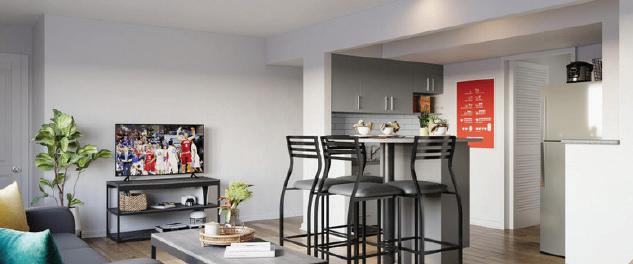


to be afraid of. Just before it absorbs completely on the clothes, sprinkle the stain with salt to help absorb and make it easier to get the stain out.
Hack #6:
Use shaving cream whenever you see a makeup stain. Just apply, rub and rinse until the makeup’s gone.







By Mike Badrov mbadrov@iu.edu | @withth3mic
I have a lot of posters, shelves and other hanging items in my room, but I also have badly painted walls that could chip with the wrong move. However, I wanted to bring some life to my dorm room, so I needed to nd ways to put these items up without the university charging me for damages after I moved out of my dorm. Here are some helpful items that can bring a touch of life to new movers’ rooms.
If you want to hang up reliable shelving, paintings or posters, Command Strips and mounting puddy are cheap, effective ways to do so. I currently have two shelves full of items supported only by Command Strips. All my posters are currently held by mounting puddy, which is easily removable from paint-ridden walls with no marks.

Command strips are seen Feb. 11,
are a way for renters to hang room decor without ruining paint or drilling
No screw holes, no paint rips and no safety deposit lost.
Rugs and tapestries
Rugs, while fashionable, can also protect the oor from be-
ing dented, an issue that will be brought up by a landlord. People drop things and fall over, but a simple rug can add a bit of padding to insure comfort and a safety deposit. Tapestries can serve the same purpose but for boring walls that need a touch of life.
I recommend shopping at Target for reasonably priced rugs that can be washed in case

of a stain. Rugs like this one can easily cover a bedroom under a bed or be a nice living room piece for guests.
I have a horrible green thumb, so I went for the plastic option, but real plants can bring a nice dose of life to any area. Plus, watering them can be a routine task for those who need




structure. I like ferns, cacti and bamboo, but feel free to raid the nearest gardening store for whatever suits the vibe.
Just one nal tip for new movers trying to spice up apartment life: whatever you purchase for a new place, you also have to move out once the lease is up. So just remember that before purchasing a 3-foot-tall DJUNGELSKOG from IKEA.

By Molly Joseph mojosep@iu.edu | @mollyrjoseph
Subletting your apartment can be a stressful process, but with the right approach, it can be done efficiently. Whether you’re studying abroad, transferring or graduating early, finding someone to take over your lease can save you from unnecessary rent payments. The key is to start early, be persistent and make your listing as attractive as possible.
The Indiana University Sublet and Roommate Board on Facebook is one of the best places to find a subletter. The earlier you post, the more likely you are to find someone who is looking for housing.
Posts can get buried quickly, so it’s important to keep reposting every few days. Another
useful group is IU Roommates/ Sublease - GIRLS ONLY, which is a great option for female students looking for a secure housing arrangement. In addition to these groups, posting on class-specific Facebook or Instagram pages can help as many students find subleases through mutual friends.
A well-crafted post will make a big difference in attracting potential subletters. Highquality photos of your space are essential, as people are more likely to inquire if they can see what the apartment looks like. Be sure to include important details like rent price, whether utilities are included, location, amenities and move-in and move-out dates. If your place has desirable features such as in-unit laundry, parking or gym access, highlighting these can
make your listing stand out.
If you’re struggling to find someone, flexibility with pricing can help. Even a slight rent reduction can make a difference in a competitive housing market. Another option is to offer to cover the first month’s utilities, making the sublease more financially appealing.
In multi-bedroom apartments, it is often easier to sublet with your roommates rather than trying to find separate subletters for each room. Many students feel uncomfortable moving into an apartment with people they don’t know, so offering the entire unit as a package can make it more appealing. For those with a onebedroom or studio apartment, finding a subletter tends to be easier since many students prefer to have their own space.
Once you find someone, it is important to get everything in writing. A sublease agreement should clearly state rent amounts, move-in and moveout dates and any other responsibilities. Checking with your landlord or leasing office beforehand is essential to ensure subletting is allowed and that all necessary paperwork is completed.
While the process requires effort, subletting your apartment successfully is possible with good timing, persistence and a well-structured listing. Starting early, using multiple platforms, and being flexible with pricing can make all the difference. With the right approach, you’ll be able to secure a subletter and move on to your next opportunity without unnecessary financial stress. ILLUSTRATION
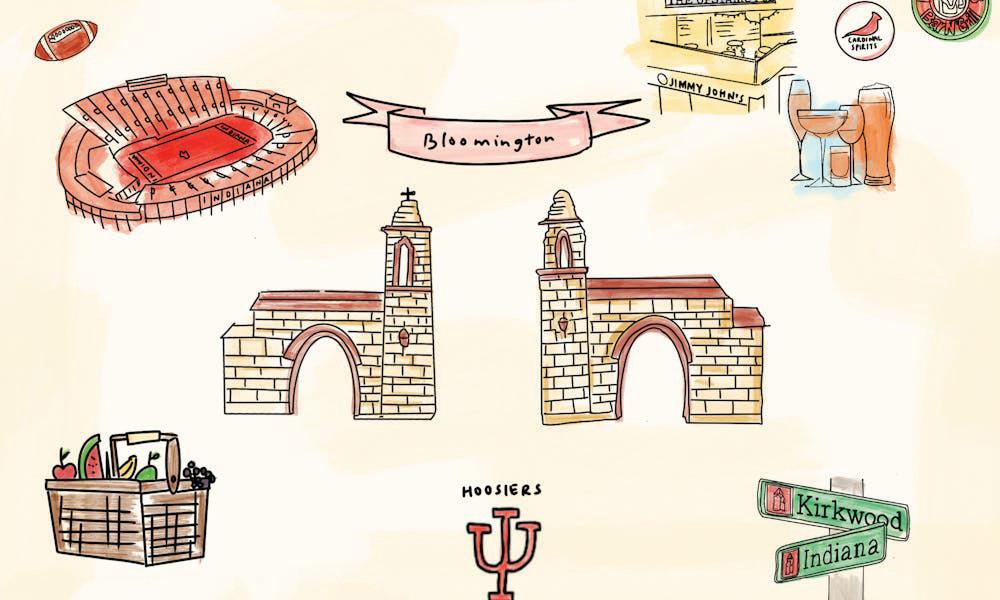
ILLUSTRATION BY MADHUMITHA MANIMARAN
Each side of town has its own advantages and disadvantages
By Andrew Miller ami3@iu.edu
Bloomington has a little bit of something for everyone — whether you like a quieter area, a cockroach-infested hole in the wall or a mansion if you’ve got money.
There are advantages and disadvantages to every area. If you prefer quiet, you probably won’t want to live by Kirkwood Avenue. If you love bars and food, I’d recommend the opposite. Let’s break it down:
I’ve lived on campus for the past few years and have loved it. I’m never that far from anything, the bike paths work well and campus and Bloomington buses come through decently often. The only issue came recently as I’ve turned 21 and started go-
ing out more. I’m a little far from the bars and Ubers tend to be expensive. Getting groceries is also a bit inconvenient if you don’t have a car.
Living on the north side is convenient if you go to the stadium often, as many people do. The buses are accessible and come regularly, and there’s tons more housing going in. The best house show I’ve ever been to was also by the stadium.
Some disadvantages are the same as campus — rent tends to be all over the place. Food options are also a little limited.
The east side tends to have some of the cheapest rent, solid bus accessibility and proximity to groceries from Target to Aldi
to Kroger. Living right by College Mall has its benefits as well.
However, transportation is the main issue. You have to get your buses right, you have to schedule everything out, and you may get home late. Getting to parties and bars can be inconvenient and expensive.
This area’s a little far from everything, but as with the east side, rent tends to be a bit cheaper. It’s also close to grocery stores and, most importantly, the AMC theater. Can’t forget about that.
Still, transportation is one of the biggest issues for living on this side of town. You have to know the bus schedule or have reliable access to parking.
I’ve heard this area is pretty
good. It’s close to bars and a lot of homes are available to rent south of it. There are lots of restaurants, stores and bars within walking distance. I’m living down here next year.
The only thing is that rent can be expensive, especially in apartment complexes with tons of amenities. There are some affordable places if you really dig for them; I’m not paying too much next year. One way to find affordable places to rent is to drive through the neighborhoods and keep an eye out for “FOR RENT” signs.
Those looking for an authentic Bloomington experience with weeknight outings to enjoy Fourth Street’s delicious cuisine or a nice nighttime walk to the Root Cellar should definitely look for a spot downtown.
By Mike Badrov mbadrov@iu.edu
As someone who currently lives in a very cramped dorm with a roommate and grew up as the oldest of four kids, I know what it’s like to live with others. More importantly, I know how to create an amicable space for the people I’m living with. Here is a quick list aimed at helping new roommates avoid searching for a new apartment.
Communication
Roommates form a new relationship with one another and now share one of the most precious things in life: a home. But not everyone lives the same way — it’s unlikely that roommates agree on everything.
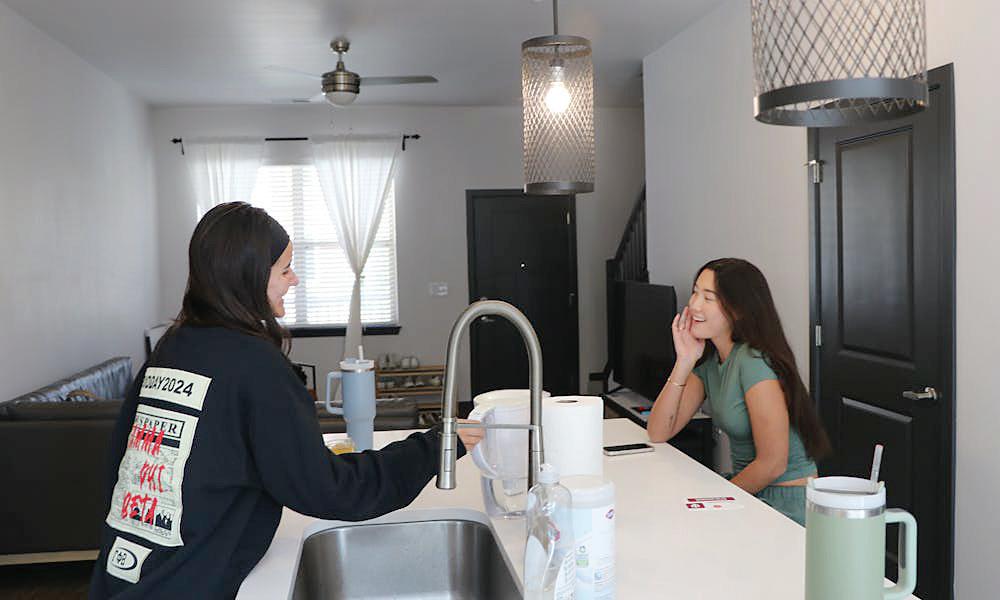
FILE PHOTO | IDS Valentina Gonzalez-Marteens washes her dishes as she chats with her roommate Crescent Norman on Sept. 25, 2024, at their apartment in Bloomington. The two IU students were catching up after classes.
Before living together, or even in the rst week, roommates should sit down together and talk about how they like to live, going from the smallest things, such as preferred room temperature, to larger items like chores. It’s better to cover the basics than assume everyone can read minds.
Cleanliness is a safe bet ose who have been living in their own space might have a hard time adjusting to the fact that the space is now shared, even if there are two di erent bedrooms. With a roommate, more things are shared than one might think: garbage, bathrooms, kitchens, fridges, sinks, couches and even the oor being walked on. Setting a standard of cleanliness will prevent future ghts from erupting about things as small as dirty dishes.
Be fair, be mindful
It can be hard to remember when living with another person
that every action taken in the shared space a ects everyone in that space: inviting friends over, loud music or leaving the lights on. It’s not to say those things can never happen in a shared space, as someone who likes Metallica on loudspeaker, but it’s important to be considerate of roommates when these seemingly simple actions are taken. Make sure before hosting a party that everyone is on board — it’s nice to be considered, so consider others.
Everyone has feelings; it’s human nature. And no matter how many measures are taken, something will fall through the cracks and cause a ght. It’s important to remember that a ght a ects both sides, and so before yelling, taking an accusatory tone and getting mad, take a breath.
Chances are roommates live together because they like each other, so give the other the grace of space and come up with a
kinder way to bring up an issue. It’s not awkward to share feelings about the shared space, so do so before the problem grows larger.
Something along the lines of: “Hey, the issue of (state the problem here), has been bothering me, and I want to talk about it with you to see if we can come to a compromise.”
is allows the roommate to respond and not feel attacked. One person has the issue, but it’s up to both to come together and solve the problem.
Sadly, real life isn’t a nice kids’ book when it comes to problemsolving, and people can suck. If a roommate is not being cooperative, bringing in a mediator or friend to talk with both sides can be e ective. But if that doesn’t work, it might be time to talk with the landlord about a new lease.
Ultimately, while living with roommates can create lifelong friends, it can also end lifelong friendships. A shared space is a fragile space, and it is up to everyone living there to come together to make it enjoyable for all.


By Adelyn Rabbitt adrabb@iu.edu
College is the beginning of most students’ financial independence and the first time they have to figure out how to budget their money. Here are some tips for budgeting in college:
Understanding your monthly income — whether it comes from family contributions, jobs, internships, scholarships or loans — is the critical first step in creating a personalized budget. Add up all spendable funds per month as well as a total for the semester, if possible.
Keep a list or spreadsheet of expenses
Make sure to keep track of all costs you will need to cover each month. Separate fixed expenses like rent, utilities, meal plans and
tuition from variable expenses like groceries, transportation, medications, personal care and entertainment. These expenses should also be labeled further into two groups: essentials and nonessentials. This labeling will help you figure out how to prioritize when spending.
Allocate funds and create your budget
As the name implies, you must prioritize necessary costs. Begin by adding up your monthly essential costs and subtracting the total from your monthly income. You can use whatever funds are leftover for unnecessary but desired costs or save them for later. If you do not have enough income to cover your necessary expenses, you may need to seek out scholarships, get a job or find cheaper alternatives when making essential purchases. Make sure to keep your budget documented, tracking all income, expenses and spending.
As your income and expenses shift, make sure your budget does too. This will let you know if you need to find ways to increase your income or stop spending too much on unnecessary products.
Make the most out of your budget
If you’re running out of funds, try to save in as many areas as possible. School supplies can be secondhand, textbooks can be rented or borrowed and household costs can be shared among roommates. When searching for fun activities to participate in, stray away from expensive restaurants and shopping and look into free activities or student discounted campus activities, like those at the Indiana Memorial Union, IU Cinema and IU Auditorium. You can keep up with campus events through beINvolved. Use campus amenities
like gyms, pools, group workouts and career services, all of which are set costs covered by your tuition. Instead of stressing over transportation costs, use any of the IU-provided modes of transportation with just a tap of your Crimson Card. Also, join free student organizations to build community and have fun without spending money.
Don’t
Chances are you know someone who has had to stick to a budget before, whether it is your parents, older siblings, friends, grandparents or even school counselors. If you are lost and need help, do not hesitate to reach out, even if that means searching for tips on Google. IU even offers a free program called MoneySmarts that can connect you with advisors to answer your financial questions. Budgeting can be hard, but sticking to it will pay off not only now, but for the rest of your life.
By Ayzah Khan ayzkhan@iu.edu | @ayzahfkhan
e transition from freshman dorms to upperclassman housing at Indiana University presents students with a crucial decision that can shape their college experience. While many students rush to nd o -campus housing, campus apartments like Tulip Tree and Campus View o er compelling advantages that deserve serious consideration.
Living in Campus View Apartments, nestled near the Student Recreational Sports Center (SRSC), keeps you on the periphery of campus life. ese apartments are exclusively available to upperclassmen and consist of two-bedroom units. Its prime location means being close to classes and endless bus options, especially during the winter months when the weath-
complex is known for its studyfriendly atmosphere and easy access to green spaces, making it an ideal location for those who like a balance in their environments.
With secure entry systems, campus police patrols and welllit pathways, late-night walks from Wells Library feel signicantly safer than similar treks through o -campus neighborhoods.
ese locations strike an ideal balance between independence and community living. Unlike isolated o -campus housing, you’re surrounded by fellow students who understand the rhythm of university life. Need a late-night grocery run? Village Pantry is just around the corner. Want to grab a quick dinner? Subway and Pizza X are only a minute away.

However, the complex is open to underclassmen as well, with dorms becoming a limited option for students as they move to being upperclassmen.
Located in the Southeast
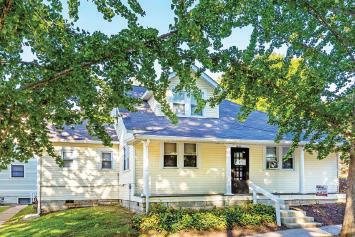



Overall, campus apartment rates are not only competitive but often more a ordable. With utilities, maintenance and highspeed internet typically included, you’re spared the hassle of juggling multiple bills or dealing with unreliable landlords. Plus,

being close to everything eliminates the cost of transportation and time saved on commuting can make campus living a surprisingly practical choice for students.
For upperclassmen seeking to maintain their connection to campus life while gaining more independence, IU’s campus apartments o er an ideal middle ground between dorm life and complete autonomy.




By Eva Remijan-Toba

Permits are required from the re chief for any bon re or open burning. Outdoor res in re pits or grills used solely for food preparation are the exception to this rule and are allowed without a permit.
Many areas near campus require parking permits including residential areas. Bloomington’s zoning laws prohibit parking on grass or unpaved areas in front of residences. is can lead to a ne, so residents should en-


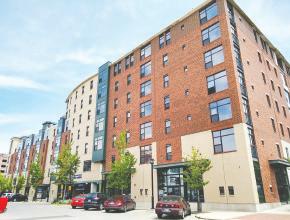
sure their car is parked in a driveway or designated parking area. Cars may be towed if parked illegally, such as blocking driveways, re hydrants or loading zones. Be mindful of street cleaning schedules, too — some areas prohibit parking during certain hours.
Non-recyclable waste such as food wrappers, broken items and dirty paper prod-
ucts should be placed in the trash bins, while recyclables like paper, cardboard, plastics and metal cans should go in the recycling bins. Trash and recyclables should always be bagged before being placed in the bin, and items like furniture or mattresses must be disposed of through Bloomington’s bulk waste pickup service.
For trash pick up, bins must be out by 5 a.m. on the scheduled collection day.


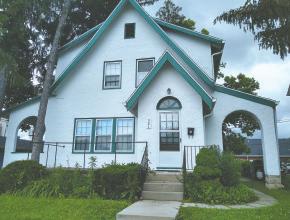

Bins should never be placed in re lanes or near re hydrants.
All dogs are required to be on a leash any time they are o their owners’ property. However, no leash is required at Ferguson Dog Park or Switchyard Dog Park. If cats are spayed and neutered, up to date on vaccinations and wearing collars, they are allowed to roam free.
Students should be aware that the legal drinking age in Indiana is 21. Possessing or consuming alcohol under the legal age can result in nes or arrests. However, the Indiana Lifeline Law protects minors who seek help in emergencies related to alcohol or drug use. It allows young people to call 911 without fear of being prosecuted for underage drinking, as long as they cooperate with authorities.
Unless a permit is issued, it is illegal to consume any alcoholic beverage on any public property. On Sundays, alcohol can only be purchased between noon and 8 p.m. from a grocery or convenience store.


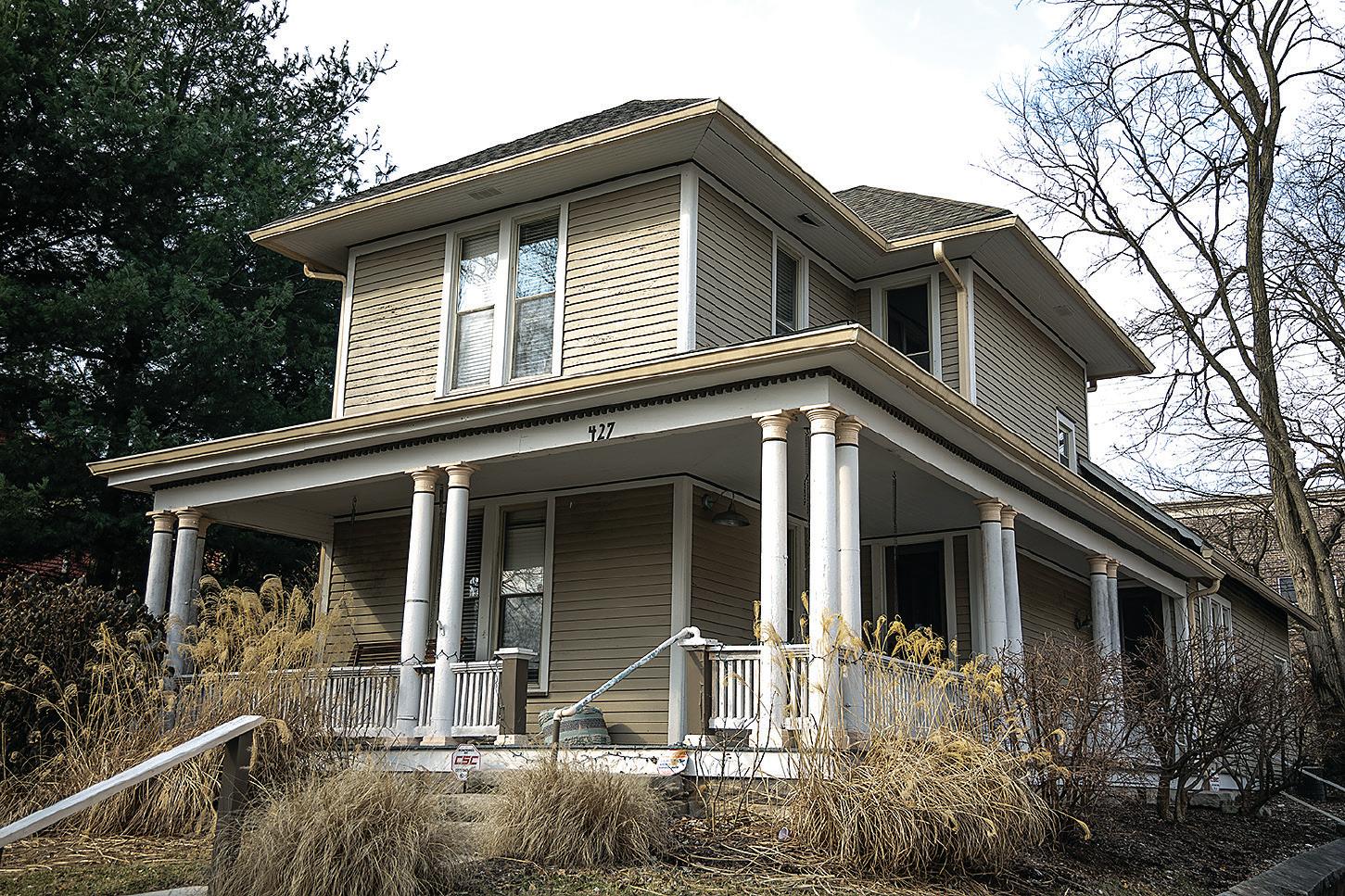
By Emerson Elledge eelledge@iu.edu
With the spring semester starting up, anxieties are running high among college students. On top of looking for an internship and doing well in your classes, you also have to secure a place to live the following school year. While some might be simply renewing their lease or opting to stay in the dorms, many students are being thrown into the deep end of the rental market without the slightest idea of what direction to go in.
Speaking from experience, the search for your perfect home can feel overwhelming, so it’s important to narrow down some parameters prior to searching. Here are a few things to weigh to help make your decision.
When hunting for a rental property, you can’t take the price tag that is shown on Zil-
low.com at face value. While it may look like a deal at first, other costs such as utilities and parking will often play a role. Houses are generally more expensive due to higher rent and utilities, and they often require tenants to pay for water, trash and maintenance services in addition to their rent. Apartments are typically more affordable, with rent often including some utilities like water, but you could be charged for additional costs which may include parking fees, pet rent and shared expenses for communal areas.
There are some housing rental companies here in Bloomington especially, but there is still a chance that your house could be rented out by a private landlord. Private landlords may have more flexible lease terms and a more personal connection with you, but they could be inconsistent with maintenance and repairs. Apartments, on the
other hand, tend to be managed by property management companies with structured policies and dedicated maintenance staff. This can mean more reliable repairs, as they have a system already in place, but also stricter lease agreements as the relationship is less personal.
Your individual need for personal space and privacy can determine whether a house or an apartment is the better fit for you and your roommates next year. Houses offer more space and often include a yard or a porch for outdoor areas. When living in a house, you often have more privacy with no shared walls with neighbors and more space to get alone time from your roommates. Apartments are a more compact living space with shared walls, ceilings and floors with other tenants. This also means that there is less privacy, as you share walls with others.
Available amenities can enhance your living experience and the importance of them should be considered when weighing the options. Rental houses rarely offer many amenities, but they do sometimes have an outdoor space and maybe a garage. Apartment amenities vary based on the complex you decide on, but they can offer access to shared amenities such as a gym, pool, clubhouse and more. It is important to note that these spaces are communal and there may be certain guidelines like time restrictions on these spaces.
While I cannot make your decision for you, these are, in my opinion, the four most important categories to consider. If you are leaning towards a place with privacy and space, a house would most likely be the better option for you. If you want amenities and a lower cost of living, an apartment would be perfect.
19
A=Apartment
H=House D=Duplex C=Condo
a=All b=Some
F=Furnished
B=Both
*Prices subject
Back Cover Covenanter Hill Neighborhood District covenanterhill.com
15 Evolve Bloomington evolvebloomington.com 1425 N. Dunn St. 812-590-8595
12 The Fields thefieldsbloomington.com
A=Apartment S=Studio T=Townhouse
H=House D=Duplex C=Condo
a=All b=Some
F=Furnished U=Unfurnished
B=Both
*Prices
Olympus Properties olympusproperties.com
11 The Omega omegabloomington.com
12 Park Doral Apartments crerentals.com
19 Parkview Apartments livebythestadium.com
11 Quarters omegabloomington.com
25 Relato relatoliving.com
3 The Rive Bloomington therivebloomington.com 1820 N. Walnut St. 812-369-4335 A
Back Cover Scholar's Quad Collegiate Apts scholarsquad.com
Back Cover Scholar's Rock Studio Apts. scholarsrockstudios.com
Back Cover Scholar's Rooftop scholarsrooftop.com
19 Stadium Crossing livebythestadium.com
19 Stadium View livebythestadium.com
5 State on Campus Bloomington stateoncampus.com/bloomington
Cover SummerHouse at Indiana summerhouseatindiana.com
22 Third Apartments, LLC thirdbloomington.com
Walnut






